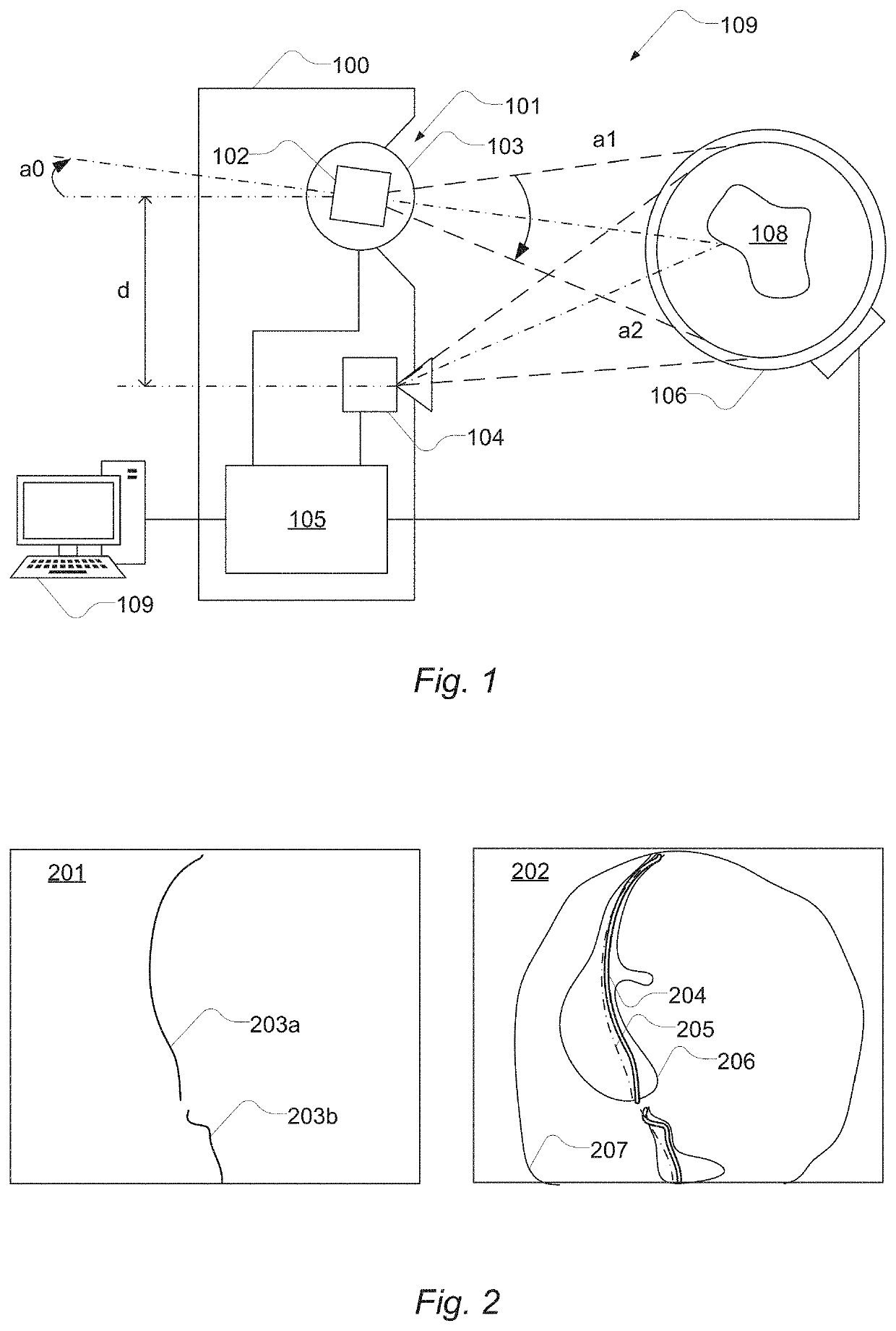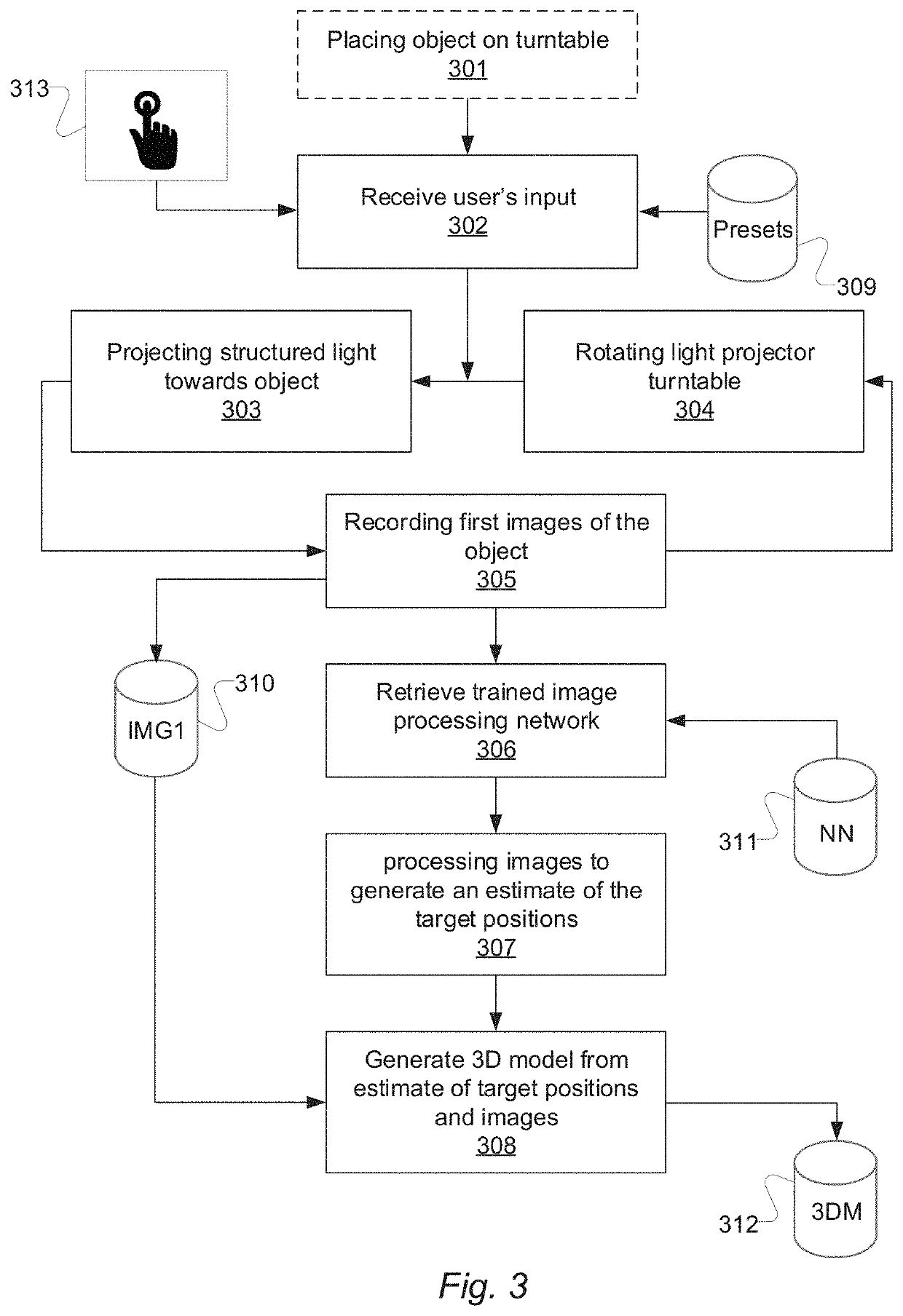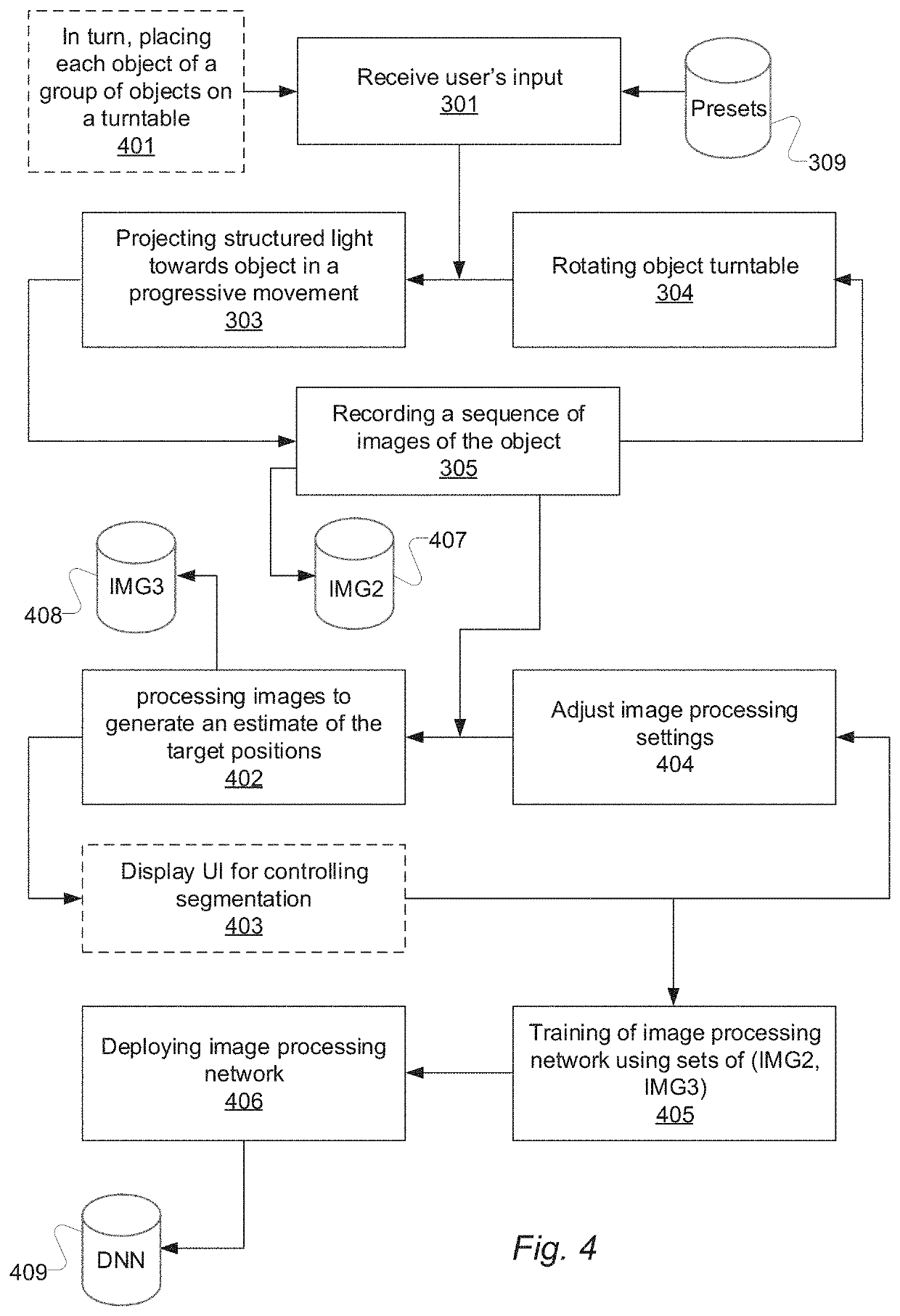3D object scanning method using structured light
a structured light and object technology, applied in the field of 3d object scanning method using structured light, can solve the problems of insufficient image processing, inability to improve accuracy, and inability to accurately reproduce the physical object as a 3d model and ease of use, and achieve the effect of reducing resolution, facilitating processing of generating the 3d model, and high resolution
- Summary
- Abstract
- Description
- Claims
- Application Information
AI Technical Summary
Benefits of technology
Problems solved by technology
Method used
Image
Examples
Embodiment Construction
[0125]FIG. 1 shows a 3D scanner system comprising a 3D scanner 100 based on structured light. The 3D scanner 100 is coupled to a first computer 109 and an object turntable 106. In some examples, the 3D scanner 100, the first computer 109 and the object turntable 106 are integrated into a single device with a common housing.
[0126]As shown, the 3D scanner 100 comprises a light projector 101 configured to project structured light onto the surface of the physical object 108 and a camera 104 arranged at a distance, d, from the light projector 101 and at a viewing angle, a0, with respect to the light projector 101. The camera 104 is configured to record a sequence of first images of at least a portion of the surface of the physical object 108. The 3D scanner also comprises a controller 105 configured to control the light projector 101, the camera 104 and the object turntable 106. The controller may be configured to communicate with the first computer 109. The first computer 109 and the co...
PUM
 Login to View More
Login to View More Abstract
Description
Claims
Application Information
 Login to View More
Login to View More - R&D
- Intellectual Property
- Life Sciences
- Materials
- Tech Scout
- Unparalleled Data Quality
- Higher Quality Content
- 60% Fewer Hallucinations
Browse by: Latest US Patents, China's latest patents, Technical Efficacy Thesaurus, Application Domain, Technology Topic, Popular Technical Reports.
© 2025 PatSnap. All rights reserved.Legal|Privacy policy|Modern Slavery Act Transparency Statement|Sitemap|About US| Contact US: help@patsnap.com



